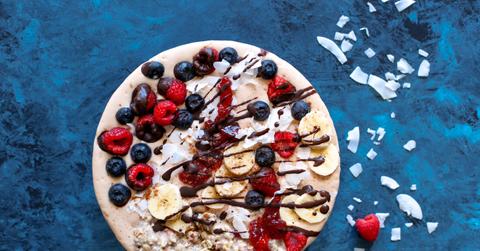6 Superfoods You Should Know About That Actually Work
You can’t go anywhere today without hearing about some new “superfood” whose density of nutrients is strong enough to magically melt fat and create world peace. But many of these superfoods are expensive, so which ones are worth the hype?
Updated May 18 2020, 9:33 a.m. ET

The next time you're at a juice bar, you can pass on that $12 wheatgrass/kombucha/acai berry smoothie. Although it seems like you can’t go anywhere today without hearing about some new “superfood” whose density of nutrients is strong enough to magically melt fat, detox your body, boost your immunity and create world peace, most of those superfoods are also extremely expensive, and don’t exactly have the clearest results.
Most nutritionists agree that a single superfood isn’t going to do a thing for you if not done in conjunction with an active lifestyle and healthy diet. But if you have those elements in place, there are some superfoods that will offer a boost to your overall health. So which ones are worth the hype?
1. Berries
All berries are good sources of anthocyanins, antioxidants, manganese, and vitamins C and K, and all will offer anti-aging, anti-aging and weight-loss properties. So there is no need give in to the marketing push for the most expensive among them like acai berries, blueberries or goji berries. Strawberries are a fraction of the cost and just as yummy. Just get them as local as possible and in season.
2. Chia seeds
These tiny black and white seeds from South America pack a big punch. Chia is a tremendous source of calcium, fiber, manganese, omega-3s, phosphorous and protein, and to get all that nutrition all you have to do is at the seeds to whatever you’re already cooking. They have no flavor, but will give a healthy boost to your food. They’re also great thickeners for soups and oatmeals. Yup, this seed has definitely earned the “superfood” title.
3. Hemp seeds
They won’t get you high, but hemp seeds will give you high doses of magnesium, polyunsaturated fatty acids like omega-3s, protein, vitamin E and zinc that are great for you. They’re easy to ingest, too—just throw them into any dish for added texture, or to a smoothie.
4. Kale
The rule of greens is the darker, the healthier; and kale leads the pack for nutritional value of leafy greens. The density of healthy goodies in kale is so high it functions as a medicine: Half a cup of the stuff is loaded with calcium, fiber, iron, has 17 times as much vitamin C of carrots, 500 percent the daily recommended value of vitamin K, and 70 percent of your recommended daily amount of vitamin A. Take that, wheatgrass.
5. Quinoa
When choosing grains to go with dinners salads, sides or breakfasts, quinoa leaves everybody else in the dust. It’s the only grain out there that is also a complete protein, and is also loaded with iron, magnesium, phosphorous, vitamin B and zinc. That makes quinoa excellent for your entire body, from bones and muscles to organs.
6. Turmeric
Turmeric, a standard ingredient in curry dishes, is touted for its anti-inflammatory, antioxidant properties—and indeed, the curcumin inside this powder can work wonders when you take high doses of it. Taken as a supplement or added in high enough levels to your food (it works with just about any dish or can be added to smoothies), turmeric can offer relief from allergies, arthritis, skin issues, digestive problems and chronic pain.